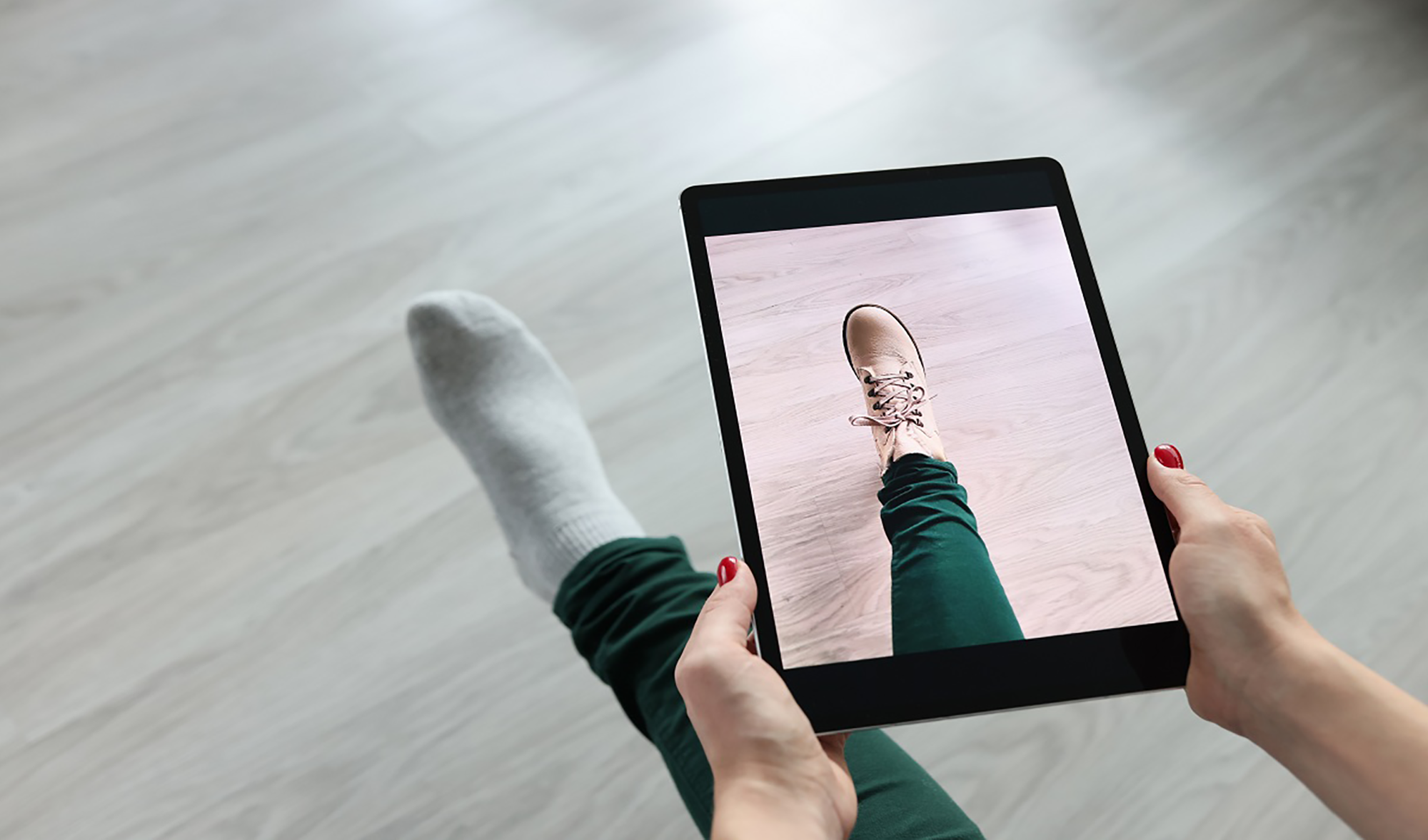AR in the retail sector

AR in the retail sector
September 14, 2022
Let’s start by defining AR
It’s crucial to grasp what augmented reality is before getting into the specifics. An immersive and interactive experience known as “augmented reality” combines real-world objects with digitally created ones. By adding current digital content to physical items, it augments or enriches reality. Retailers can use AR to improve and accelerate their businesses’ digital transformation.
When a user points a camera-equipped device at an object, built-in augmented reality software analyses the video stream recognises the object and overlays digital material on top of it using a mix of depth tracking and computer vision.
When used in the context of the retail industry, it alludes to the placement and real-time manipulation of goods that are not yet on the market. It is a single interactive experience that combines real and artificial items. Thanks to this technology, real-time updates and modifications are made feasible, enabling users to modify and use things that they neither hold nor own.
Why AR?
With the advent of augmented reality, businesses may now communicate with customers via their mobile devices. AR may be utilised everywhere, whether on a PC at home, a mobile device, or a kiosk in a store, and it generates a unique digital experience that strengthens the bond between the consumer and the brand.
The conventional method of product promotion for retailers has been print advertising campaigns or other media. Print, media, and in-store marketing initiatives, which were previously divided, are now combined with augmented reality to create a full consumer experience.
Augmented reality integration in marketing initiatives attempts to strengthen consumer relationships, increase sales, and improve the shopping experience. Retailers now have a variety of classic and non-traditional interactions at their disposal to draw in their target audience.
Benefits of AR in retail
Many firms are utilising augmented reality to offer immersive shopping experiences that foster engagement, improve customer education, and pique consumers’ curiosity as retailers place greater emphasis on in-person interactions. Augmented reality may dramatically impact both in-store and online conversion rates and have a big impact on your bottom line through in-store displays and activations, virtual try-on experiences, and virtual navigation.
Because individuals are more inclined to purchase a product that they have seen and practically tried, augmented reality initiatives in the advertising industry have been incredibly successful. Users can try things before they buy them via augmented reality, which also provides more information than conventional display and advertising techniques can. It also helps shop employees introduce a product’s various uses and features, which raises conversion rates.
Contactless transactions will increase as eCommerce develops and customers grow more at ease making purchases online. Augmented reality can often take the place of the necessity for direct product interaction. Instead, by visually analysing the photo-realistic representations and examining the product from various angles, customers can save time, effort, and even money. Even while a product demonstration may not have as much pressure as a pitch, it is still a chance to sell. When it is hard to demonstrate a genuine product, an AR experience can be a compelling substitute.
Examples of AR in retail
Virtual shopping – Allows users to overlay digitally created apparel, accessories, and other items directly onto their bodies in real-time.
Virtual navigation – AR navigation systems can direct customers through real-world retail settings while simultaneously displaying more details about real products right on the user’s smartphone. In this way, customers can locate what they’re looking for in even the biggest malls and department stores.
In-store displays – One of the best methods to engage potential customers and increase brand awareness is through augmented reality windows and digital in-store displays. These augmented reality displays can track and gather real-time analytical data in addition to offering clients fun new ways to interact with adverts. Additionally, unlike static billboards or bus ads, AR displays are dynamic and can be modified to iterate based on data gathered over time.
In addition to giving customers exciting new ways to interact with advertisements, these augmented reality displays can track and capture real-time analytic data. And unlike billboards or bus advertisements, which are static, AR displays are dynamic and can be updated to iterate based on data collection over time.
Virtual fitting rooms – Virtual fitting rooms allow customers to try on products without actually touching them, much as smartphone AR try-on experiences. Additionally, they let shops sell products that they might not currently have in stock and then deliver them right to customers’ front doors.
The secret to success in the retail industry now includes augmented reality as a crucial tool and essential ingredient. Applications for augmented reality can be used at several points in the sales process to give customers a distinctive purchasing experience. At PrimeIT we’re always up-to-date with the most recent technologies and trends so, we have a dedicated team of experts to help you digitally transform your business, in order to meet the market’s expectations. If you’re looking for a new partner to help you excel, talk to us.